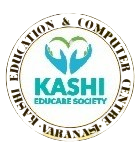A C Language Computer Course focuses on teaching the fundamentals and advanced concepts of the C programming language. C is one of the oldest and most widely used programming languages, renowned for its efficiency and versatility. It is the foundation of many modern programming languages, such as C++, Java, and Python, and is widely used in system programming, embedded systems, and applications requiring high performance.
Here’s a typical C Language Computer Course Content outline:
1. Introduction to C Language
- Overview of C Programming:
- History and evolution of C
- Features and applications of C (system programming, embedded systems)
- Advantages of C over other languages (efficiency, portability, control over system resources)
- Setting up the C Development Environment:
- Installing a C compiler (GCC, Turbo C, or IDEs like Code::Blocks, Dev-C++)
- Writing, compiling, and executing a C program
- Structure of a C Program:
- C program syntax (headers, main function, semicolons)
- Writing your first C program (Hello World)
- Basic input and output in C (printf, scanf)
2. C Language Basics
- Variables and Data Types:
- Primitive data types (int, char, float, double)
- Modifiers (signed, unsigned, long, short)
- Variable declaration and initialization
- Operators in C:
- Arithmetic operators (+, -, *, /, %)
- Relational operators (==, !=, <, >, <=, >=)
- Logical operators (&&, ||, !)
- Assignment and increment/decrement operators (=, +=, -=, ++, –)
- Bitwise operators (&, |, ^, ~, <<, >>)
- Input and Output:
- Using
printf()for output - Using
scanf()for input - Formatting input and output (specifiers for integers, floats, characters)
- Using
3. Control Structures
- Decision Making (Conditional Statements):
- if, else, and else if statements
- Nested if statements
- switch-case statements
- Loops:
- while loop
- for loop
- do-while loop
- Nested loops
- Loop control statements (break, continue, return)
- Error Handling:
- Basic error checking (using conditions and loops)
4. Functions in C
- Defining Functions:
- Structure of a function (return type, function name, parameters)
- Function declaration, definition, and calling a function
- Return values and void functions
- Types of Functions:
- Built-in functions (e.g.,
printf(),scanf(),math.hfunctions) - User-defined functions
- Built-in functions (e.g.,
- Function Arguments:
- Passing arguments by value
- Passing arguments by reference (using pointers)
- Recursion:
- What is recursion?
- Writing recursive functions (factorial, Fibonacci series)
- Understanding the stack in recursion
5. Arrays in C
- Introduction to Arrays:
- Declaration and initialization of arrays
- Accessing array elements using indices
- Multi-dimensional arrays (2D arrays)
- Array Operations:
- Traversing and modifying arrays
- Finding the largest and smallest elements in an array
- Searching in an array (linear search, binary search)
- Sorting arrays (Bubble sort, Insertion sort)
- Strings in C:
- String handling (array of characters, null-terminated strings)
- String functions (
strlen(),strcpy(),strcat(),strcmp())
6. Pointers in C
- Introduction to Pointers:
- Understanding memory addresses and pointer variables
- Declaring pointers and dereferencing pointers
- Pointer Arithmetic:
- Pointer increment, pointer subtraction, and pointer comparison
- Working with arrays using pointers
- Pointers to Functions and Structures:
- Function pointers
- Pointer to structures and arrays
- Dynamic Memory Allocation:
- Using
malloc(),calloc(),realloc(), andfree() - Memory leak prevention and memory management
- Using
7. Structures and Unions in C
- Structures:
- Declaring and defining structures
- Accessing structure members using dot operator (.)
- Nested structures and arrays of structures
- Passing structures to functions (by value and by reference)
- Unions:
- Difference between structures and unions
- Declaring and defining unions
- Accessing union members
- Enumerations:
- Using
enumto define constant values
- Using
8. File Handling in C
- Introduction to File Operations:
- Types of files (text files, binary files)
- File pointers and file opening modes (
r,w,a,r+,w+) - Reading from and writing to files (
fscanf(),fprintf(),fgets(),fputs())
- File Handling Functions:
- Opening and closing files (
fopen(),fclose()) - Reading and writing operations (
fread(),fwrite()) - File manipulation functions (
remove(),rename())
- Opening and closing files (
- Binary Files:
- Working with binary files (
fread(),fwrite()) - Reading and writing structures to binary files
- Working with binary files (
9. Advanced Concepts in C
- Preprocessor Directives:
- Introduction to
#define,#include,#ifdef,#ifndef,#endif - Macro definitions and constant declarations
- Introduction to
- Bit Manipulation:
- Bitwise operators and bit shifts
- Setting, clearing, and toggling specific bits
- Command-Line Arguments:
- Using
argcandargvto accept command-line arguments
- Using
- Linked Lists:
- Introduction to singly and doubly linked lists
- Creating, inserting, deleting, and traversing linked lists
- Data Structures:
- Stacks and Queues (Array and Linked list implementation)
- Trees (Binary trees, Binary Search Trees, Tree traversals)
- Hashing (Basic hash tables)
10. C Language Project and Practical Applications
- Project Work:
- Final project based on the concepts learned (e.g., creating a student database system, inventory management system, or simple game)
- Problem-Solving with C:
- Implementing algorithms for real-world problems (sorting, searching, optimization problems)
- Best Coding Practices:
- Writing clean, efficient, and modular code
- Code documentation and comments
- Debugging techniques using GDB (GNU Debugger)
